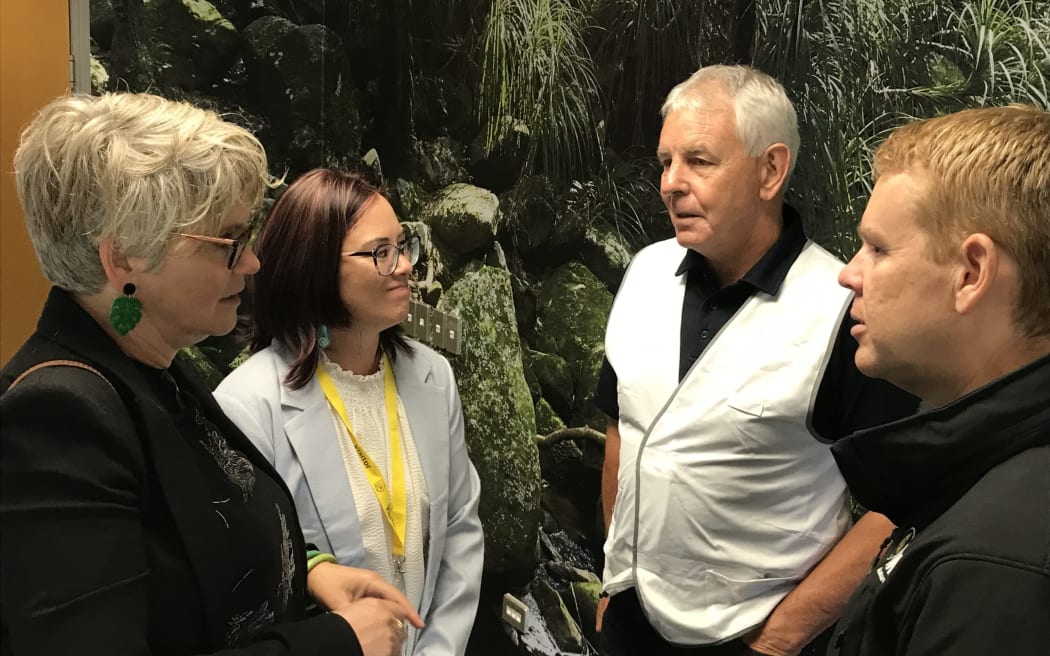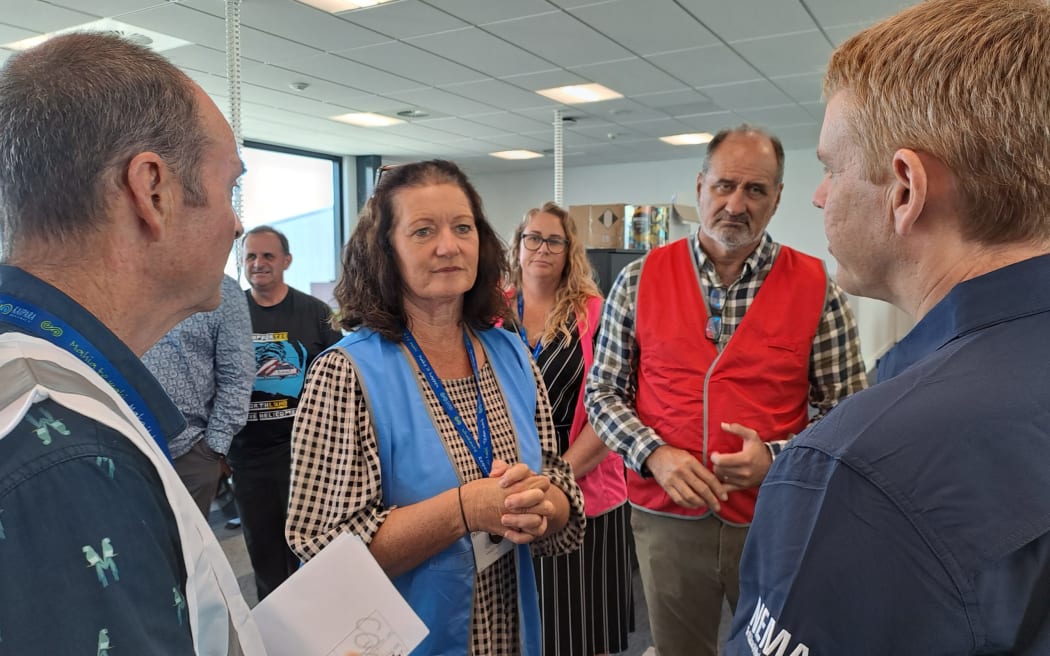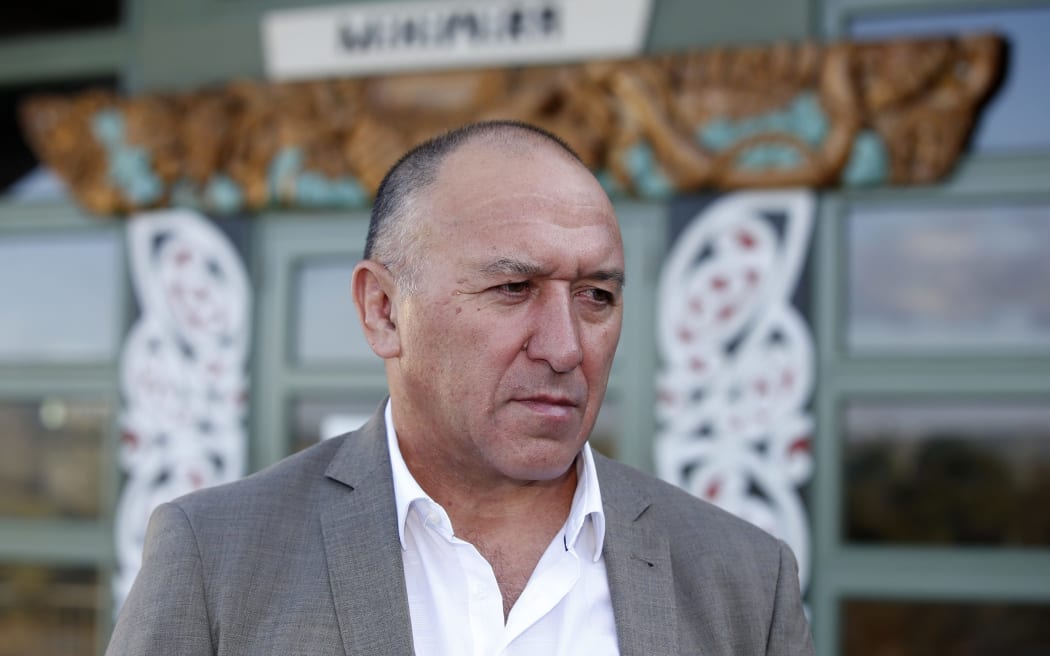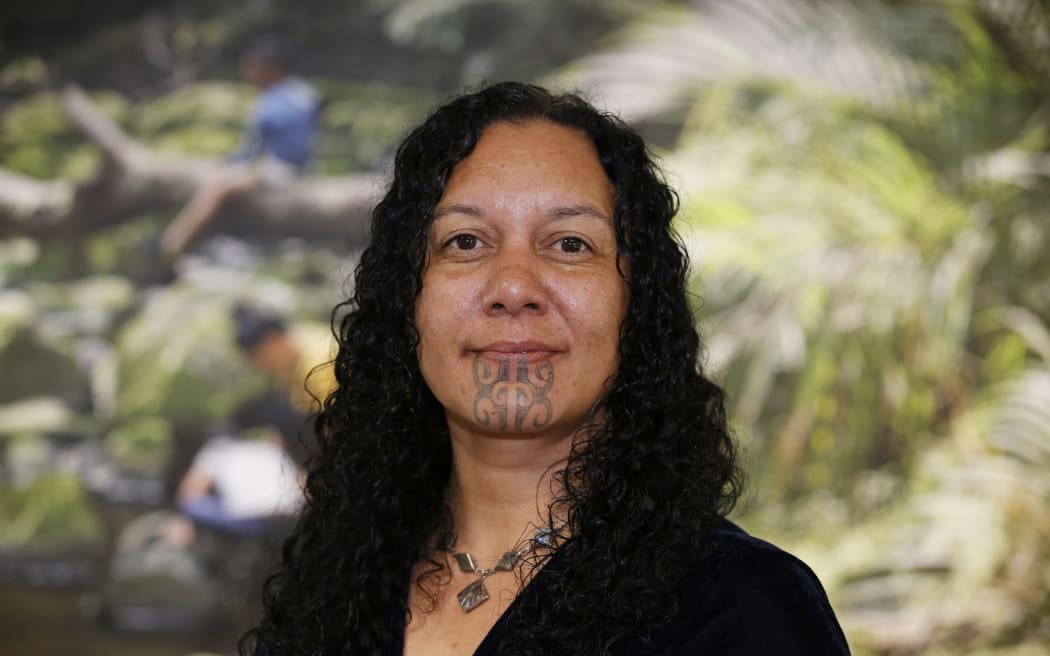
Chris Hipkins (right) talking about the cyclone’s impact with from left: Whangārei MP Emily Henderson, Far North Deputy Mayor Kelly Stratford and Northland Civil Defence Group controller Graeme MacDonald.
Photo: LDR / Susan Botting
Cyclone Gabrielle is giving more urgency to government work on how marae can be better supported to be part of disaster responses, Prime Minister Chris Hipkins says.
He told Northland local government leaders last Friday housing people as the result of a disaster was one area where more work was needed, marae potentially playing an important role in this.
Marae in a number of Te Tai Tokerau locations opened their doors during Cyclone Gabrielle, providing a range of services to their communities.

Chris Hipkins meets Northland Civil defence staff.
Photo: Supplied / Kaipara District Council
Ngāti Hine leader Pita Tipene said Te Tai Tokerau marae were not equitably recognised for their important role in a cyclone, flooding or bad weather event.
“We need to be strategic about marae being places of sanctuary to go and get help,” Tipene said.
Tipene said many of Te Tai Tokerau’s 360 marae were the only point that was high and dry in a community.
“Marae have the capacity to make themselves into a place that can take people in,” Tipene said.

Ngāti Hine leader Pita Tipene at his Motatau marae.
Photo: LDR / Northern Advocate / Michael Cunningham
Tipene said Northland local government needed to look at funding marae for this purpose.
He also said iwi in the north played an important role in responses such as Cyclone Gabrielle.
Iwi were a link between central government and what was happening on the ground locally. There were already well-established networks such as Te Kahu o Taonui (Northland Iwi Chairs Forum) that regularly communicated between central government and local communities.
Northland Regional Council chair Tui Shortland told Hipkins Te Tai Tokerau marae needed better recognition for their critical community support role.
She said marae were typically within walking distance of homes within many communities that were cut off from the outside world during a cyclone or other bad weather events.

NRC chair Tui Shortland.
Photo: LDR / Northern Advocate / Michael Cunningham
Northland’s Civil Defence Group Plan says there is opportunity for Civil Defence and Māori to strengthen and enrich networks.
It seeks to support and facilitate partnerships in an enhanced approach to emergency management, working to support and facilitate engagement across whānau, hapū, iwi and marae.
“The culture of whakawhanaungatanga and manaakitanga complements processes with a number of [Civil Defence] capability and capacity building characteristics,” the plan says.
“Inclusion of Māori across all levels will inform and enrich work in the emergency management sector leading to better outcomes for all of our communities by promoting inclusive engagement that supports decision making [and] provides greater recognition, understanding and integration of iwi / Māori perspectives and tikanga in emergency management, before, during and after a civil defence emergency,” it says.

Local Democracy Reporting is Public Interest Journalism funded through NZ On Air



